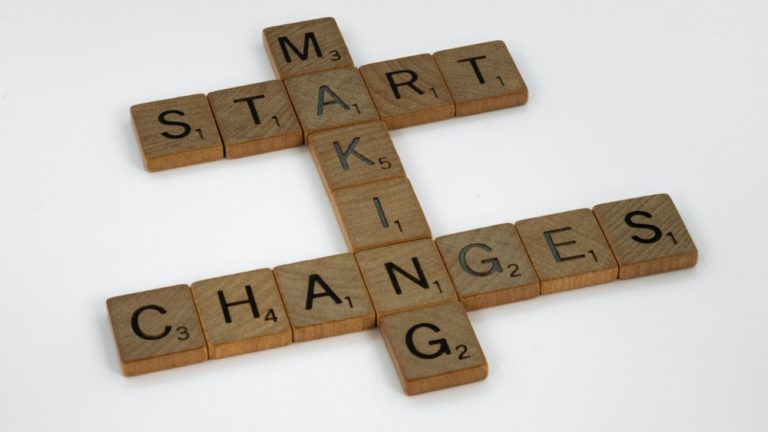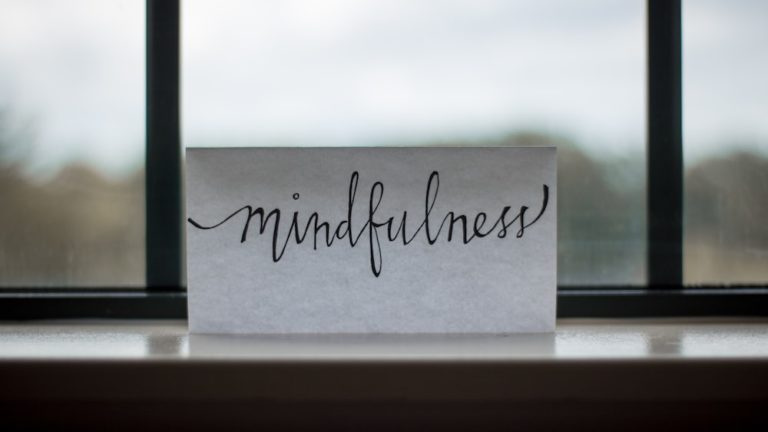Mindfulness In Education: Techniques For Calming The Mind
Welcome to the world of mindfulness in education! In today’s fast-paced and highly competitive academic environment, it’s easy for students and teachers alike to feel overwhelmed and stressed. But what if there was a way to help everyone find a sense of calm and focus in the midst of all the chaos? That’s where mindfulness comes in. In this article, we’ll explore the importance of mindfulness in education, dive into practical techniques that can be implemented in the classroom, and uncover the many benefits that come with fostering a mindful learning environment.
The concept of mindfulness has been around for thousands of years, deeply rooted in ancient Buddhist practices. However, recent research has shown that mindfulness skills can be incredibly beneficial for students and teachers in contemporary educational settings. By developing these skills, we can help create a more peaceful and productive classroom, improving not only academic outcomes but also the overall well-being of everyone involved. So let’s dive in and discover why mindfulness belongs in the classroom!
The Importance of Mindfulness in Education
Incorporating mindfulness into education is crucial for a multitude of reasons. It not only enhances the personal well-being of students and teachers but also contributes to a more positive and effective learning environment. By investing in mindfulness skills, we’re investing in the future of our communities, fostering a new generation of mindful and compassionate individuals.
Benefits for Students
Research has shown that incorporating mindfulness skills into a student’s daily routine can yield numerous benefits. For starters, it can improve focus and concentration, helping them stay on task during class and while completing assignments. This increased focus can lead to better academic performance, including higher math scores and reading comprehension.
Additionally, mindfulness has been linked to reducing stress and anxiety in students. The practice of mindfulness teaches them how to become aware of their thoughts and emotions without judgment. This allows them to recognize when they’re feeling stressed or overwhelmed and use mindfulness techniques to regain a sense of calm and control.

Lastly, mindfulness can also enhance students’ emotional intelligence and social skills. Being more aware of their own emotions helps them better understand the emotions of others, leading to improved empathy and compassion. This increased emotional intelligence can have a positive impact on their relationships with peers and teachers, as well as their overall school experience.
Incorporating mindfulness skills into a student’s daily routine can improve focus and academic performance, reduce stress and anxiety, and enhance emotional intelligence and social skills.
Benefits for Teachers
Teachers can also reap the rewards of mindfulness practice. By incorporating mindfulness into their daily routine, they can experience reduced stress and burnout. The demands of teaching can be incredibly taxing, both mentally and emotionally. However, mindfulness can provide teachers with the tools to better manage these challenges and maintain a more balanced state of mind.
Another benefit for teachers is the improvement of their emotional intelligence. Just as it does for students, mindfulness can help teachers become more aware of their own emotions and the emotions of others. This can lead to better communication and understanding between teachers and their students, leading to a more positive and productive learning environment.
Lastly, mindfulness can help teachers become more effective educators. By being more present and aware during their lessons, they can better respond to the needs of their students, adapt their teaching methods, and create a more engaged and dynamic classroom experience.
Improving the Learning Environment
A mindful classroom is one where both students and teachers are fully present, focused, and engaged in the learning process. By implementing mindfulness techniques, we can create an environment that promotes increased attention, better communication, and reduced stress. This, in turn, can lead to improved academic performance and overall well-being for everyone involved.
Furthermore, a mindful learning environment encourages empathy and compassion. As students and teachers become more aware of their own emotions and the emotions of others, they can develop stronger connections and better understand one another’s needs. This fosters a supportive and nurturing atmosphere, where everyone feels valued and respected.
Finally, mindfulness can also contribute to an environment that encourages creativity and problem-solving. By being present and engaged in the moment, students are better able to explore new ideas, think critically, and find innovative solutions to challenges they face. This can help them develop important skills that will benefit them throughout their academic and professional careers.
Implementing Mindfulness Techniques in the Classroom
Now that we’ve discussed the importance and benefits of mindfulness in education, it’s time to explore some practical techniques that can be easily implemented in the classroom.
Mindful Breathing Exercises
One of the simplest and most effective mindfulness techniques is mindful breathing. This practice involves focusing on the breath as it flows in and out of the body, helping to anchor the mind in the present moment. Mindful breathing exercises can be done individually or as a group, and can be easily incorporated into the classroom routine.
To begin, have students sit comfortably with their feet flat on the ground and their hands resting on their laps. Invite them to close their eyes or lower their gaze to the floor. Encourage them to take slow, deep breaths in through the nose and out through the mouth, paying attention to the sensation of the breath as it enters and leaves the body. Continue this practice for a few minutes, gradually increasing the duration as students become more comfortable with the exercise.
Body Scan Meditation
Body scan meditation is another mindfulness technique that can be easily incorporated into the classroom. This practice involves systematically focusing on different parts of the body, observing any sensations or tension that may be present. This can help students become more aware of their physical state and learn to release tension and stress.
To guide students through a body scan meditation, have them sit or lie down comfortably. Starting at the top of the head, invite them to bring their awareness to each part of the body in turn, moving slowly down through the face, neck, shoulders, arms, torso, legs, and feet. Encourage them to observe any sensations or tension they may feel in each area, and to gently release this tension as they exhale.
Body scan meditation can help students become more aware of their physical state and learn to release tension and stress, by systematically focusing on different parts of the body and observing any sensations or tension that may be present.
Mindful Listening
Mindful listening is a powerful practice that can help students develop better communication skills and increase their overall awareness. This technique involves fully focusing on the sounds around them, without judgment or distraction.
To practice mindful listening, have students sit quietly and close their eyes. Invite them to bring their attention to the sounds in their environment, whether it’s the hum of the air conditioning, the chatter of classmates, or the rustling of leaves outside the window. Encourage them to simply observe these sounds without attaching any thoughts or judgments to them. After a few minutes, invite students to share their experiences and discuss any insights they gained from the exercise.
Gratitude Practices
Cultivating an attitude of gratitude can have a profound impact on students’ overall well-being and happiness. By regularly practicing gratitude, students can learn to appreciate the positive aspects of their lives and develop a greater sense of contentment and satisfaction.
To incorporate gratitude practices into the classroom, consider starting each day with a gratitude circle. Have students sit in a circle and take turns sharing something they are grateful for. This could be a personal achievement, a kind deed from a friend, or simply the beauty of the world around them. Encourage students to be specific and genuine in their expressions of gratitude, and to listen attentively as their classmates share.

Mindfulness for Educators
Educators, you are not forgotten! As crucial players in the education system, it’s essential that you too benefit from mindfulness practices. These practices can help enhance your well-being, effectiveness in the classroom, and relationships with students. Let’s explore some ways you can cultivate mindfulness in your own life.
Self-Care and Stress Reduction
As an educator, it’s no surprise that stress can often feel like an unwelcome companion. But did you know that mindfulness can help reduce stress and enhance self-care? For starters, practicing mindfulness can help you become more aware of your stress levels, allowing you to address them proactively. Simple techniques like deep breathing or taking brief mindful breaks throughout the day can make a difference.
Moreover, self-care through mindfulness can also support your memory, which is essential for educators who need to retain vast amounts of information. By incorporating mindfulness into your daily routine, you’ll be laying the foundation for a more balanced and stress-free life. Remember, taking care of yourself is not a luxury – it’s a necessity!
Cultivating Emotional Intelligence
Emotional intelligence is a valuable skill for educators, as it enables you to better connect with and support your students. Through mindfulness practices, you can develop a heightened awareness of your own emotions and those of others. This awareness creates space for empathy, understanding, and compassionate communication.
One example of mindfulness fostering emotional intelligence is the story of Michelle, an educator who struggled with connecting to her students. By practicing mindfulness, she became more in tune with her emotions and was able to communicate more effectively with her students, leading to improved relationships and a more positive classroom environment.
Emotional intelligence, backed by science and supported by neuroscientists and psychologists, is a core component of effective teaching. By cultivating this skill through mindfulness, you’ll enhance not only your own well-being but also your students’ learning experiences.
Mindful Communication with Students
Mindful communication is an essential skill for educators, as it helps create a nurturing and supportive learning environment. By being present and listening attentively to your students, you’re better able to understand their needs and respond appropriately. This active engagement can lead to stronger relationships and a more positive classroom atmosphere.
Some ways to practice mindful communication include:
- Taking a moment to pause and collect your thoughts before responding
- Actively listening to your students, without judgment or preconceptions
- Using open-ended questions to encourage deeper conversations
By embracing mindful communication, you’ll foster a classroom culture of trust, understanding, and collaboration.
Mindful communication can help educators create a nurturing learning environment by actively listening to students, using open-ended questions, and fostering a culture of trust and collaboration.
Overcoming Challenges in Implementing Mindfulness
While the benefits of mindfulness in education are clear, implementing these practices can come with its fair share of challenges. Let’s explore some common obstacles and how to overcome them.

Addressing Skepticism and Resistance
Introducing mindfulness to your classroom may be met with skepticism or resistance from students, parents, or even colleagues. To address these concerns, it’s essential to:
- Educate stakeholders about the science and benefits of mindfulness
- Share success stories and case studies to demonstrate its effectiveness
- Offer a variety of mindfulness techniques, allowing individuals to find what resonates with them
- Encourage open dialogue and address concerns thoughtfully
By proactively addressing skepticism and resistance, you’ll create a more supportive environment for mindfulness practices to flourish.
Ensuring Inclusivity and Cultural Sensitivity
In order to create an inclusive and culturally sensitive mindfulness program, consider the following:
- Research and select mindfulness techniques that are universally accessible
- Be mindful of the language used to describe mindfulness practices, avoiding any terms that may be perceived as exclusive or culturally appropriative
By taking these steps, you’ll help ensure that your mindfulness program is inclusive and respectful of the diverse perspectives and backgrounds present in your classroom.
Balancing Mindfulness with Academic Demands
While mindfulness can undoubtedly benefit students and teachers, it’s essential to strike a balance between these practices and the academic demands of the classroom. Here are some strategies to help you find that balance:
- Integrate mindfulness into existing routines by incorporating brief exercises into transitions, breaks, or moments when students need to refocus
- Use mindfulness to support academic learning, such as practicing mindful listening during lectures or mindful reading during independent work
- Collaborate with colleagues to share ideas, resources, and best practices for integrating mindfulness into the curriculum
By thoughtfully incorporating mindfulness into your classroom, you’ll create a harmonious balance between self-awareness and academic achievement.
Measuring the Impact of Mindfulness in Education
To truly understand the effectiveness of mindfulness in education, it’s important to measure its impact on both students and educators. By assessing outcomes and continuously adapting your approach, you’ll be well on your way to cultivating a mindful learning environment that supports growth, well-being, and success for all.
Assessing Student Outcomes
Measuring the impact of mindfulness on student outcomes can be a bit tricky, but there are ways to assess the results. One approach involves collecting data on key indicators like academic performance, attendance, and behavior. For instance, you could track changes in test scores, homework completion rates, and participation in class discussions. Additionally, surveys and questionnaires can be used to gauge students’ self-perceptions, stress levels, and emotional well-being.
Another valuable method is qualitative analysis. This involves observing students in the classroom, listening to their experiences, and gathering feedback from teachers and parents. By paying close attention to students’ engagement, focus, and emotional regulation, we can gain a better understanding of how mindfulness practices are influencing their education.
A combination of these quantitative and qualitative measures can provide a comprehensive picture of the impact of mindfulness in the classroom, allowing educators to make informed decisions about its implementation.
Mindfulness can be measured through collecting data on key indicators like academic performance, attendance, and behavior, as well as using surveys and questionnaires to gauge emotional well-being and through qualitative analysis.
Evaluating Teacher Well-being and Effectiveness
Assessing the impact of mindfulness on teacher well-being and effectiveness is just as important as evaluating student outcomes. Teachers who practice mindfulness themselves can experience improvements in stress reduction, emotional regulation, and overall job satisfaction. These benefits can have a ripple effect on their students, creating a more positive and productive learning environment.

To evaluate the impact of mindfulness on teacher well-being, consider using self-assessment tools, like questionnaires and surveys, to gather information about stress levels, job satisfaction, and emotional well-being. Additionally, feedback from colleagues, administrators, and students can provide valuable insights into how mindfulness practices are affecting teacher effectiveness.
Continuous Improvement and Adaptation
Implementing mindfulness in education is an ongoing process that requires continuous improvement and adaptation. As schools and teachers integrate mindfulness practices into their classrooms, they should be prepared to evaluate the effectiveness of their methods and make adjustments as needed. This might involve refining techniques, introducing new exercises, or providing additional resources for both students and educators.
To ensure that mindfulness practices are having a positive impact, schools should establish a system for regular feedback and assessment. This can include collecting data on student outcomes, teacher well-being, and overall classroom environment. By staying attuned to the needs of their students and educators, schools can continually adapt their mindfulness strategies to promote optimal learning and personal growth.
FAQs
1. How can I introduce mindfulness to my students without making it seem like a chore?
Introducing mindfulness without making it seem like a chore can be achieved by making the practices fun and engaging. You can start with short, age-appropriate exercises that incorporate elements of play, creativity, and movement. By presenting mindfulness as a tool to help students feel more focused, calm, and in control, they’ll be more likely to embrace the practice willingly.
2. What are some age-appropriate mindfulness techniques for younger students?
Some age-appropriate mindfulness techniques for younger students include mindful breathing exercises, body scans, and mindful listening. These activities can be adapted to suit the needs and interests of younger children by incorporating elements of play, storytelling, and movement. For example, you can guide them through a “breathing buddy” exercise where they place a stuffed animal on their belly and watch it rise and fall as they breathe.
3. How can I incorporate mindfulness into my existing curriculum?
Incorporating mindfulness into your existing curriculum can be done by integrating mindfulness exercises into daily routines and lesson plans. For example, you might start each day with a brief breathing exercise or incorporate mindful moments during transitions between activities. By weaving mindfulness practices throughout the day, you can help students develop a consistent practice that enhances their learning experience.
4. Are there any potential risks or drawbacks to implementing mindfulness in the classroom?
Potential risks or drawbacks to implementing mindfulness in the classroom may include resistance from students, parents, or colleagues who may be skeptical about its benefits. Additionally, it’s important to be mindful of cultural sensitivities and ensure that the practices are inclusive and accessible to all students. Lastly, finding the right balance between mindfulness and academic demands can be challenging, so it’s crucial to continually assess and adapt the practices to meet the needs of your students.
Conclusion
Mindfulness in education has the potential to significantly improve the learning environment for both students and teachers. By implementing mindfulness techniques in the classroom and supporting educators in their own mindfulness practice, schools can foster a culture of awareness, empathy, and resilience. Overcoming challenges in implementing mindfulness requires ongoing assessment, adaptation, and open-mindedness from all involved. As education experts continue to explore the benefits of mindfulness, more and more schools will be empowered to create a calmer, more focused, and emotionally intelligent learning community.
I wish you the best! Fabian.
Share with your Friends:






